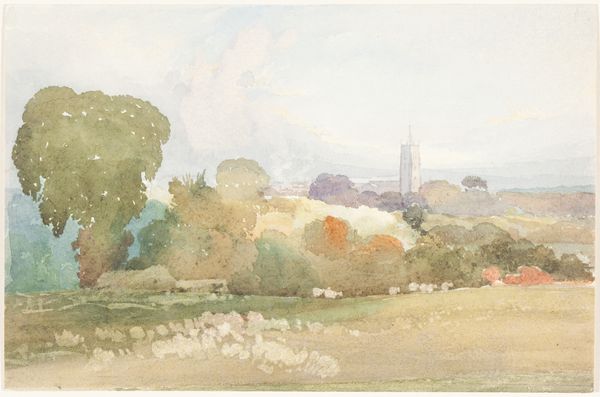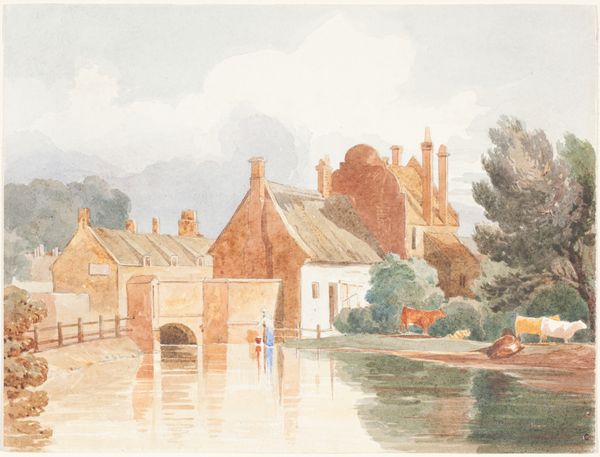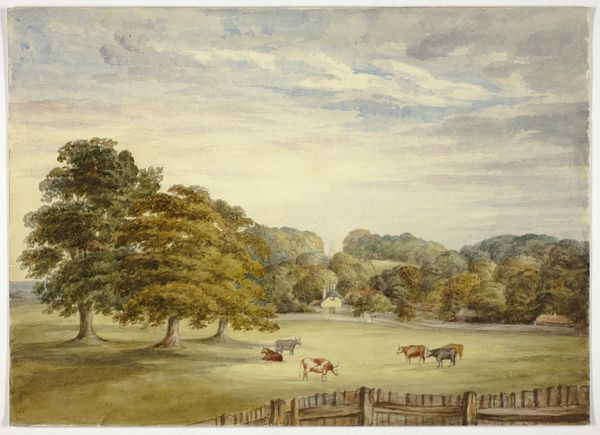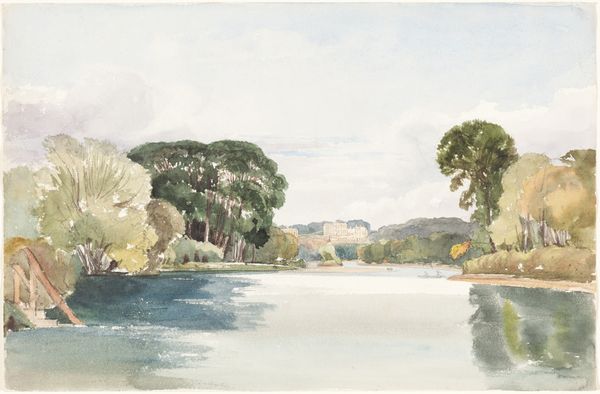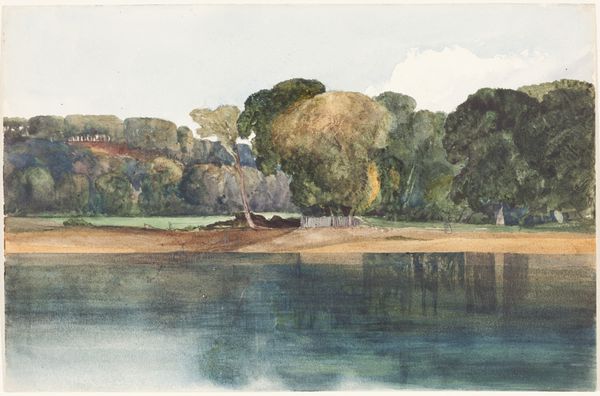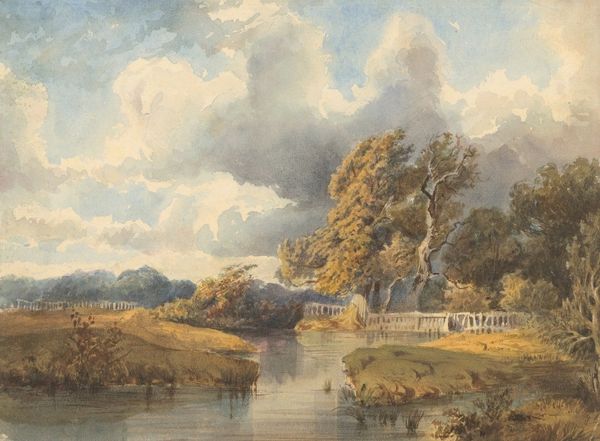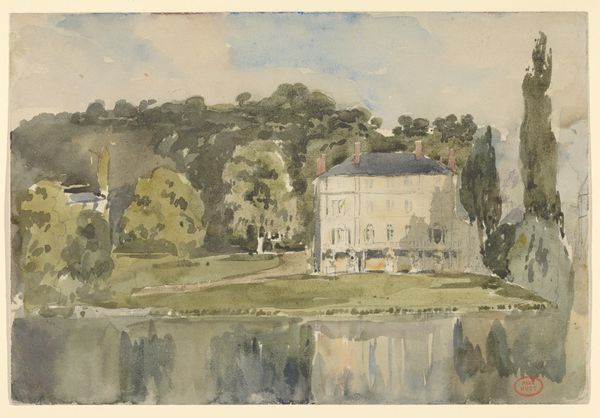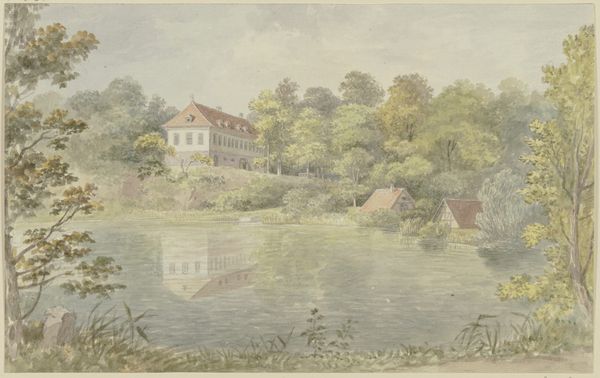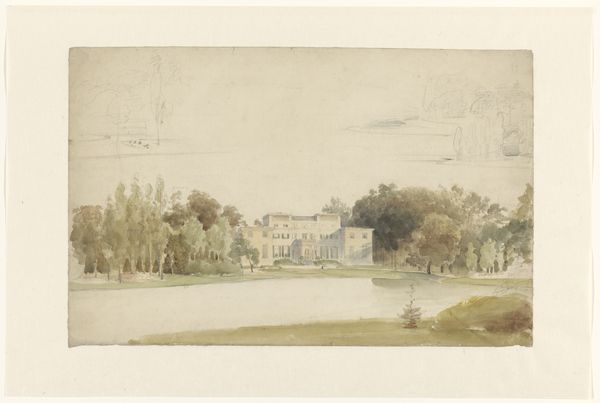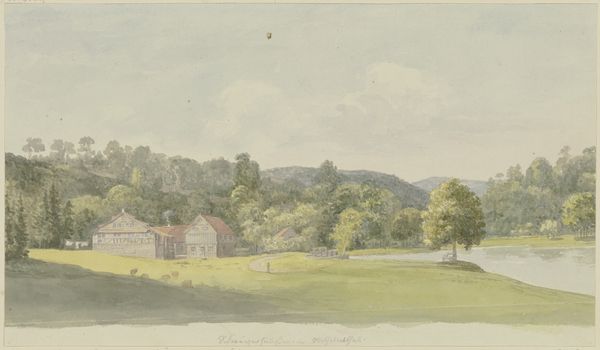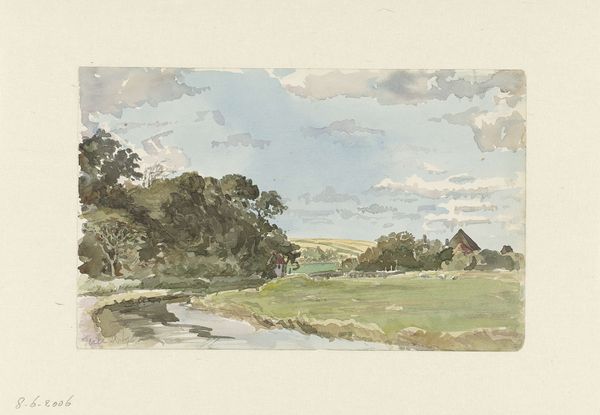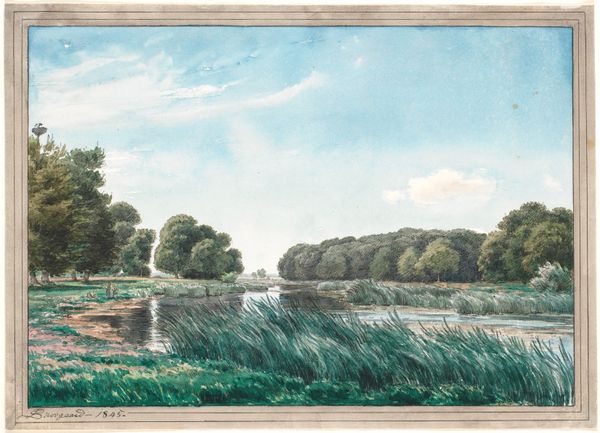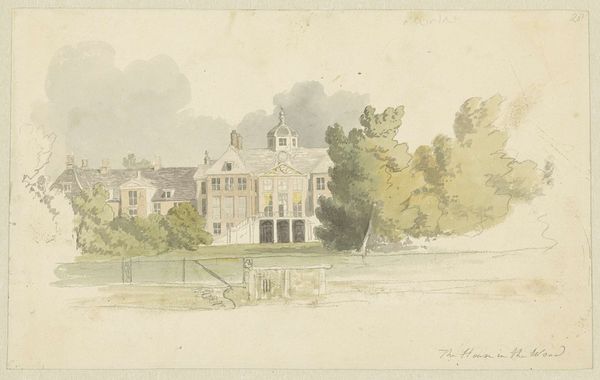
drawing, plein-air, watercolor
#
drawing
#
plein-air
#
landscape
#
watercolor
#
romanticism
#
watercolour illustration
#
watercolor
#
realism
Dimensions: overall: 21.1 x 32.8 cm (8 5/16 x 12 15/16 in.)
Copyright: National Gallery of Art: CC0 1.0
Curator: Oh, what a calming vista! My first breath is one of tranquility. It is almost a painting of memory, a dream, but yet grounded, real. Editor: That's a perfect start. We are looking at “Horstead Mill on the River Bure, Norfolk,” a watercolour drawing attributed to James Bulwer, dating back to somewhere between 1829 and 1848. Curator: I can just imagine sitting there, by the river's edge, sketchbook in hand, feeling that soft breeze. There's such stillness, like the world is holding its breath. Even the reflections in the water have this ethereal quality. It's as if the image is fading or emerging at the same time. Editor: Water itself is a potent symbol—always changing, always reflecting, and a symbol of purification. Bulwer's use of watercolour perfectly captures the fluid and ever-changing nature of time and memory. Look at how the buildings seem to dissolve into the landscape. Do you see it? Curator: Absolutely! I'm also captivated by the subtle colour palette—the muted greens and yellows. It creates a sense of gentle melancholy, perhaps even a touch of nostalgia. As though the scene is remembering a past that exists only as a suggestion of itself now. The buildings certainly give off a sense of this. Editor: The romanticism apparent in this landscape connects us to a longer tradition, linking nature with emotional states and imbuing rural scenes with symbolic value. Each tree, building, and reflection is charged with cultural meaning—evoking this idealised past in painting. It is more than a place; it represents values, longings, and perhaps, anxieties regarding changing times. Curator: Nostalgia with that undercurrent of anxiety resonates very strongly. But looking again it really has a beauty born of observation, which the painting also possesses through it’s gentle washes. It draws you in, makes you wonder and dream and at least partially succeeds in answering the question, “Can I feel and touch this?” What more can we ask of a picture? Editor: It makes you question: how much of what we perceive is colored by what we expect to see? How can our individual emotional context can shift the symbolic nature of such images? I shall not forget this vista anytime soon.
Comments
No comments
Be the first to comment and join the conversation on the ultimate creative platform.
